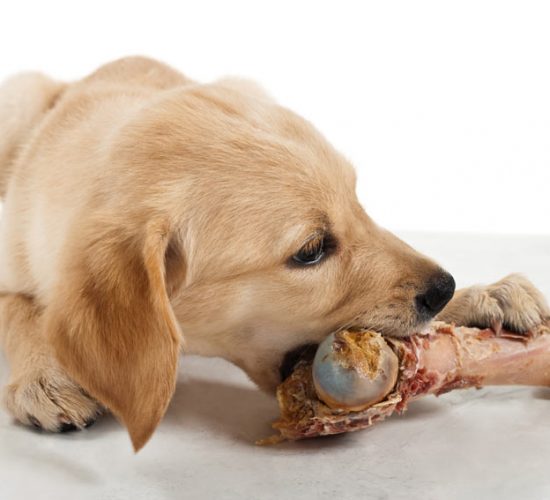
People who feed their pets a raw diet are essentially trying to mimic what their pet’s wild relatives eat in their natural habitat, while eliminating the unwanted ingredients of that diet/ lifestyle. Most variations of a raw food diet, eventually have more or less the same ingredients, the differences and variety can contribute to an even better balance in the diet. (Read more on diet variations)
All advocates of raw food for pets agree that the diet should be based on RMB (Raw Meaty Bones). The basic principle of RMB is that the meat and bones are served together, in their natural form to promote the ripping, tearing, gnarling and chewing. There are parts with greater ratio of bone and there are meatier parts. Since feeding whole carcasses is part of the philosophy, feeding all the parts, meaty and bony will pretty much even things. If your pet is large enough to eat a whole carcass, or half (chicken for instance), that would be the perfect bone to meat ratio. Bones should make about 10-15% of the diet and the meat 60-75%.
| Body weight kg/lbs | Protein | Veggies & Fruits | Total (2%) | ||
| Meat | Bones | Organs | |||
| 2.5kg / 5.5lbs | 30 – 37.5gr | 5 – 7.5gr | 2.5 – 5gr | 7.5 – 12.5gr | 50gr |
| 5kg / 11lbs | 60 – 75gr | 10 -15gr | 5 – 10gr | 15 – 25gr | 100gr |
| 10kg / 22lbs | 120 – 150gr | 20 -30gr | 10 – 20gr | 30 – 50gr | 200gr |
| 15kg / 33lbs | 180 – 225gr | 30 -45gr | 15 – 30gr | 45 – 75gr | 300gr |
| 20kg / 44lbs | 240 – 300gr | 40 – 60 gr | 20 – 40gr | 60 – 100gr | 400gr |
| 25kg / 55.1lbs | 300 – 375gr | 50 – 75gr | 25 – 50gr | 75 – 125gr | 500gr |
| 30kg / 66.1lbs | 360 – 450gr | 30 – 60gr | 60 – 90gr | 90 – 150 | 600gr |
| 35kg / 77.1lbs | 420 – 525gr | 70 – 105gr | 35 – 70gr | 105 – 175gr | 700gr |
| 40kg / 88.2lbs | 480 – 600gr | 80 – 120gr | 40 – 80gr | 120 – 200gr | 800gr |
| 45kg / 99.2lbs | 540 – 675gr | 90 – 135gr | 45 – 90gr | 135 – 225gr | 900gr |
| 50kg / 110.2lbs | 600 – 750gr | 100 – 150gr | 50 – 100gr | 150 – 250gr | 1kg |
Cats, which are much more strict carnivores, would have a significantly smaller percentage (2-10%) of fruit and vegetables, and higher RMB content to make up for it. Cats with IBD (Inflammatory Bowel Disease) should not have any veggies or fruits in their diet. The principals though are the same.
The general guideline is 15-20% of the pet’s ideal body weight a week or 2-3% per day.
Ideal bodyweight means that an overweight cat or dog should be fed 2-3% of the weight they should be, a day. A more active pet would probably require a bit more. Some small toy dogs also tend to have a higher metabolism and activity rate.
If the ribs are starting to get prominent (and it’s not a breed trait), start increasing the quantity. If they disappear, however, under a growing layer of fat, it is time to cut down on these portions.
For a mature healthy dog, the weekly quantity can also be divided by six, providing a day (some even recommend two non-consecutive days) of fast. Puppies and kittens should eat much larger quantities and much more frequently. They may eat from 5% of their body weight up to what they would as adults (depending on their age). In some cases, they should have unlimited access to food. Pregnant and lactating moms should also have extra food, 5-7% of their bodyweight per day, with extra bone content.
Since carnivores in the wild are not getting meals served to them at regular intervals, the feeding schedule is usually determined by the feeder. Once or twice a day seems to work for most pets and owners.
The benefit of feeding once is the openness of the pet to try new things. Puppies and kittens should be fed up to 4-6 times a day.
All payments are due, in full, when ordering online or upon delivery.

Lorem ipsum dolor sit amet, consectetur adipiscing elit.
Lorem ipsum dolor sit amet, consectetur adipiscing elit.








Lorem ipsum dolor sit amet, consectetur adipiscing elit.